Trincomalee, or ‘Trinco’ in mariners’ jargon, is a unique port which fulfils every ship captain’s dream. It has great depths of water, vast sea room to manoeuvre the largest of ships and provides safety from the elements even in the worst of weather. No wonder, it was the base for the British East Indian Squadron and subsequent naval presence even after the end of the World War II till the 1950s1. The charm of Trinco is again attracting attention with India and Sri Lanka having agreed in principle to jointly operate the oil storage facility in Trincomalee, a legacy of the British presence2.
The end of the civil war in Sri Lanka in 2009 allowed Sri Lanka to focus on development and utilising its unique location to kick start a number of port development projects. The initial efforts saw the development of Colombo and subsequently Hambantota though the later has been mired in some controversy. These projects were, in large part, aided by the Chinese, leading to major concerns in India. Colombo has since grown to become one of the largest transhipment hubs in the region, which caters to nearly 42 percent of India’s transhipment needs3. The next phase of port development projects in Sri Lanka is aimed at the ports of Trincomalee and Kankesanthurai. The Sri Lankan government seems to be making overtures to India for fructification of these development efforts. India, therefore, has to now take a call on how it intends to respond to these overtures and safeguard its interests in the region.
The Port of Trincomalee
Location - Trincomalee is situated on the East coast of Sri Lanka, about 350 km north of the main East-West shipping lane of the Indian Ocean. The harbour is located to the north of the Trincomalee Bay which is actually a group of three bays along with the Kodiyar Bay in the South and the Tambalagam Bay to the west. Due to its location, it is quite well protected from the Southwest Monsoon though the weaker Northeast Monsoon does have an effect, which is mitigated by the natural land features of the bay. Trincomalee is just a day’s deviation from the main East – West shipping lane, comparable to that of Colombo, and hence does not impose very high deviation costs for shippers.
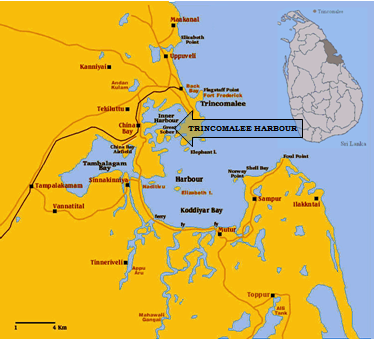
Harbour - The Trincomalee harbour has a water area of 1630 hectares, as compared to Colombo which has just about 220 hectares, and a land area of 5631 hectares4.. The depths inside the harbour are in excess of 20m near the berths and more than 30m in the turning basin while the outer harbour has an average depth of 200m, and at places it is more than 1000m deep. To understand these figures, a look at the facilities of Jawaharlal Nehru Port Trust (JNPT), India’s busiest port, would be worthwhile. JNPT can accommodate ships with a draught of just 14m since the depths do not permit larger ships. In fact, the dredged channel in Mumbai has a depth of 19m. The available depth and sea room in Trincomalee harbour can therefore permit berthing of the largest ships like the Chinamax ore carrying vessels, which have a draught of 20m, or the new 18000 twenty-foot equivalent unit (TEU) containerships, which currently cannot be accommodated in any ports in this region. Utilisation of these ships permits economies of scale which can bring down the costs of shipping significantly for the region. The harbour presently has three berths with a total wharfage of 1050m which can accommodate ships up to a maximum draught of 9.75m. The potential for development of the harbour to berth greater number of ships as also bigger ships is therefore immense. The Sri Lankan cabinet has recently given approval for a proposal to sign an exchange of notes for a grant assistance of one billion yen from Japan for the development of the port5.. The money is intended to be utilised for modernising navigation aids of the harbour which will increase the operating efficiency of the port. While this will modernise current port operations, the capacity of the port will remain the same. Only a dedicated port development project with the objective of increasing operating depths, increasing berthing and creation of new terminals will allow the port to expand to its potential.
Connectivity to Hinterland - Trincomalee is connected to the rest of Sri Lanka through a highway and a rail link, both of which need modernisation. While the highway from Colombo to Trincomalee is being upgraded to an expressway, the rail link has, as yet, not been the focus of government efforts6.. A rather slow link, mainly catering to cargo, connects Trincomalee and Colombo. A faster line with the ability to transport containers as also people will greatly help in the development of Trincomalee. The Sri Lankan Air Force base at China Bay, on the western side, has the only airstrip in the area. It presently caters to the limited requirement of the Air Force and will have to be upgraded to operate large modern passenger and cargo aircraft to provide the required impetus for the development of Trincomalee.
Power Supply - The project to build a coal-fired power plant at Sampur, near the Kodiyar Bay south of Trincomalee, with the National Thermal Power Corporation (NTPC) of India, was scrapped last year by the Sri Lankan government due to ‘environmental concerns’. India has subsequently offered to help set up a solar power plant in Trincomalee7.. The Sri Lankan government is also weighing gas fired power plants in addition to other renewable energy options like wind power. This is also in line with India’s ambitious goal of generating 100 gigawatts (GW) solar power by 2022. Any development of industrial zones and port infrastructure in Trincomalee will require power which the present grid in Sri Lanka cannot supply.
India and Trincomalee
Historical Connections - The legacy of the British East India squadron, based out of Trincomalee to control the Sea Lanes of Communication (SLOCs) south of Sri Lanka, continued into the 195O’s with the joint exercises of the Commonwealth navies being held off Trincomalee8... Indian, Pakistani and Sri Lankan navy ships along with the Royal Navy participated in these exercises to gain experience on contemporary tactics and achieve interoperability with other navies. Consequent to the closure of the Royal Navy’s East India Station at Trincomalee in 1958, these exercises were shifted to Kochi and subsequently petered out.
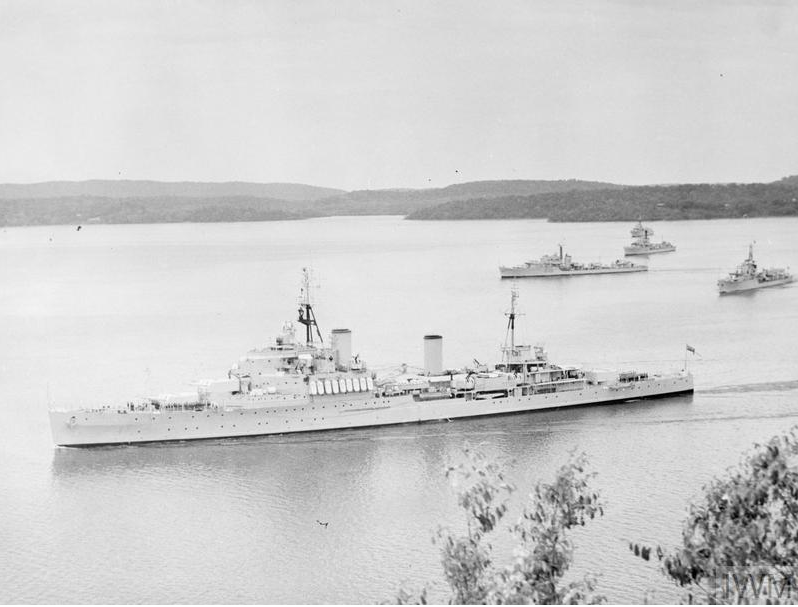
Later Day Engagement - The Indian Navy has had a long period of engagement with Sri Lanka which goes as far back as April 1971 when ships from the Eastern Fleet patrolled off Trincomalee and the east coast looking for rogue merchantmen which were supplying arms to insurgents of the Janata Vimukta Perumana uprising. Consequent to the Rajiv Gandhi-Jayawardene Accord of 1987, the Indian Navy resumed patrolling off the east coast of Sri Lanka including off Trincomalee. The Accord itself had an important caveat to safeguard Indian concerns pertaining to Trincomalee which was that: “Trincomalee or any other ports in Sri Lanka will not be made available for military use by any country in a manner prejudicial to India's interests.... The work of restoring and operating the Trincomalee oil tank farm will be undertaken as a joint venture between India and Sri Lanka”.
These caveats had possibly been put in to prevent American or British interference in the region which had been precipitated by the signing of secret accords between the Sinhala-majority government and the governments of the United States and Britain to bring their warships into Colombo, Trincomalee and the Gulf of Mannar10... These accords were intended to help contain the rising Tamil militancy against the background of a Lankan perception of Indian involvement. Similar fears of leasing Trincomalee to the Chinese had surfaced in 1965 in the event of a renewed Sino-Indian conflict. These were put to rest by the then Prime Minister Mrs Bandarniake11... India, therefore did not want any foreign interference in this region, especially when it was getting involved in the internal strife of a neighbouring country.
Present Day - In accordance with the Rajiv Gandhi-Jayawardene accord of 1987, India signed an agreement with Sri Lanka in 2003 to upgrade and commission the 99 tanks of the oil farm – each with a capacity of 12,250 kilolitres – on a 35-year lease. The China Bay Tank farm is the largest one located between West Asia and Singapore and was built by the British to support the operations of the Royal Navy in this theatre during the Second World War. Indian Oil Corporation (IOC) through its subsidiary, the Lanka IOC, is currently engaged in bunkering operations and operates 15 out of the 99 storage tanks in the lower oil tank farm in Trincomalee. However, the project has really not gathered steam as intended in the agreement of 2003 and much has still to be achieved since 84 of these oil tanks are still lying unused. The recent announcement by Sri Lanka’s Petroleum Minister, Chandima Weerakkody, that India and Sri Lanka will jointly operate 30 oil tanks in Trincomalee, is a step in the direction of fulfilment of India’s commitments in the 1987 accord and the 2003 agreement.
India’s Options
The development of Trincomalee, with Indian involvement, is crucial to safeguarding of India’s own interests which underlined the signing of the Rajiv Gandhi - Jayawardene Accord in 1987. The subsequent civil war in Sri Lanka did dent India’s international reputation while the internal strife in Sri Lanka hampered fulfilment of its commitments to Sri Lanka, especially in Trincomalee. However, the civil war ended in 2009, nearly a decade ago, and 15 years have elapsed since the signing of the 2003 agreement for development of the oil farm. Prime Minister’s Modi’s trip to Sri Lanka in 2015 has provided a discernible impetus to bilateral relations and the change of government in Sri Lanka two year ago has also helped in the process. India therefore needs to capitalise on this renewed goodwill before the window of opportunity closes. This awareness is evident in India’s proactive approach to this relationship with the Foreign Secretary, Mr S Jaishankar, making two trips in a span of just two months to Sri Lanka. The benefits of this interaction have to be immediately ploughed into generation and fructification of projects with clearly defined results on the ground in a time bound manner. The development of the oil tank farm has to be accorded the utmost priority so that gains made by the IOC in the operation of these tanks in the past 15 years can be translated into concrete results. The tanks can be used as a storage dump for shipping lines in the area for which ship owners and operators will have to be sensitised towards exploiting this facility. The farm can also be used as a transhipment facility after due consultation with ship owners and oil traders as otherwise it could lead to another failure.
India’s engagement with Sri Lanka, especially in Trincomalee, can get an immediate fillip with regular and visible naval and coast guard deployments to the port for exercises on issues of common concern like humanitarian assistance and disaster relief (HADR), anti-piracy, fishery control etc. Possibilities at setting up facilities ashore for coordination of activities of this nature in the future, under the aegis of the Indian Navy or the Indian Coast Guard, can also be explored.
India should pursue the development of the Trincomalee port, with assistance from a friendly country like Japan, after feasibility studies like the current one being undertaken by Surbana Jurong and commissioned by the Sri Lankan government, have submitted their findings. In fact, the Ports and Shipping Minister of Sri Lanka, Arjuna Ranatunga, has said that India is “very keen” on Trincomalee Port12. This had also earlier been stated by the Sri Lankan Minister for Regional Development, Field Marshal Sarath Fonseka, when he said that "things are being finalised" with India to develop the port13. India has to proceed quickly on this development and exploit the current sentiment before it evaporates in the face of the ‘fire spewing dragon’.
Notwithstanding the full development of the port, India can explore the feasibility of augmenting the existing facilities augmented for supporting operations of smaller craft in the Bay of Bengal, especially those involved in oil exploration and drilling. Currently, many of them utilise facilities in Singapore and Dubai for repairs as also for laying up of oil rigs. A viable facility in the neighbourhood, especially in the confines of a sheltered harbour like Trincomalee would be an ideal proposition.
Any development of the port will need concomitant enhancement of the connectivity of Trincomalee by road, rail and air. However, these are not debilitating hurdles since the basic facilities exist and some plans are already underway to expand the existing networks. The current window of opportunity under the present government needs to be utilised in a proactive manner to garner visible results in a mutually decided time frame. India’s legendary glacial pace of its bureaucracy can be overcome by the current government so that another Chabahar is not repeated. Trincomalee has much more importance to India especially as the dragon continues spreading its wings to cover the Indian Ocean.
Endnotes
1. Read ‘Transition to Triumph: History of the Indian Navy, 1965-1975’, GM Hiranandani. Lancer Publishers, New Delhi. 2000
2. Sri Lanka, India To Jointly Develop Trincomalee Oil Tank Farm’, Meera Srinivasan. The Hindu, 09 Apr 17
3. Colombo Breaks Through as South Asia’s Next Big Transshipment Port’, Mark Szakonyi, Executive Editor, JOC.com. 20 Oct 2015. http://www.joc.com/port-news/asian-ports/port-colombo/colombo-breaks-through-south-asia%E2%80%99s-next-big-transshipment-port_20151020.html. Accessed on 12 Feb 17. ‘Indian Demand for Colombo Transshipment Slowing, Data Shows’, India Special Correspondent. 27 Dec 2016. http://www.joc.com/port-news/asian-ports/port-colombo/indian-demand-colombo-transshipment-slowing-data-shows_20161227.html
Accessed on 10 Jan 17.
4. Sri Lanka Ports Authority website. http://www.slpa.lk/. Accessed on 08 Apr 17.
5. ‘Sri Lanka To Receive Yen Grant For Trinco Port Development’, Author LBO. 30 March 2017. http://www.lankabusinessonline.com/sri-lanka-to-receive-yen-grant-for-trinco-port-development/. Accessed on 03 Apr 17
6. ‘Pre-conditions for the success of Trincomalee as a transport and logistics hub serving the Bay of Bengal’, Professor Rohan Samarajiva, Founding Chair, LIRNEasia. [email protected].
7. ‘India Offers Solar Plant In Trincomalee’, The Hindu 21 Oct 16.
8. Read ‘Transition to Triumph: History of the Indian Navy, 1965-1975’, GM Hiranandani. Lancer Publishers, New Delhi. 2000.
9. Source - Imperial War Museum. http://www.iwm.org.uk/collections/item/object/205163856. Accessed on 09 Apr 17.
10. Read ‘Transition to Guardianship: The Indian Navy 1991-2000 Hardcover – October 10, 2012’, GM Hiranandani. Lancer Publishers, New Delhi 2012.
11. From the archives - February 21, 1965. http://www.thehindu.com/todays-paper/tp-miscellaneous/from-the-archives-february-21-1965/article6919352.ece. Accessed on 10 Apr 16.
12. Three Sri Lankan Ports That India Could Develop: Minister Ranatunga’, Ranjana Narayan. 30 Mar 2017. http://www.avenuemail.in/world/three-sri-lankan-ports-india-develop-minister-ranatunga/106291/. Accessed on 10 Apr 17
13. ‘India, Sri Lanka Talks to Develop Trincomalee Port Enters Final Stage’. The New Indian Express, 18 Jan 2017.
Image Source: http://blog.kudoybook.com


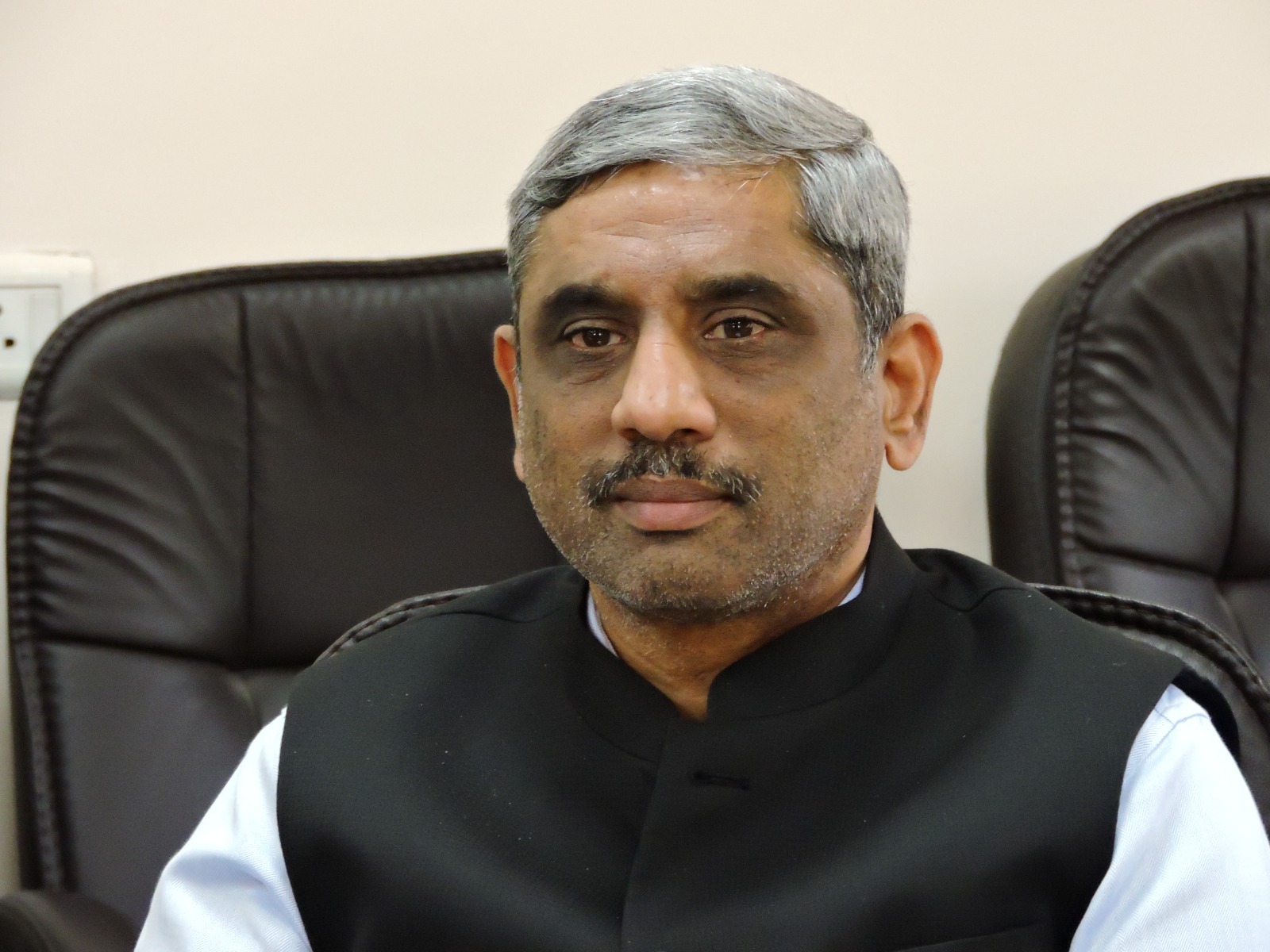

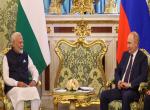


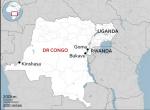
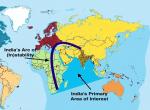

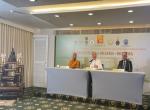
Post new comment